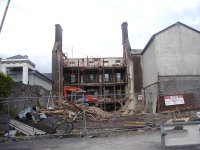The Whole Is Less Than The Sum Of It's Parts
 Seymour D. Fair at The Third Battle of New Orleans has a post about past urban renewal projects in St. Lewis an the potential impact if similar revitalization is attempted in New Orleans.
Seymour D. Fair at The Third Battle of New Orleans has a post about past urban renewal projects in St. Lewis an the potential impact if similar revitalization is attempted in New Orleans.
New Orleans, for the part, avoided most of the federally-funded urban renewal programs and this decision left New Orleans with most of it's historic neighborhoods and structures intact. It is possible and unfortunate however, that a similar "checkboard" pattern of development (mostly vacant lots populated with sporadic structures here and there) could be the post-KTMB outcome in the heavily flood-impacted areas of New Orleans such as Lakeview, Gentilly, and New Orleans East. Hopefully, this will be minimalized long term.I agree.
The main difference between the urban renewal projects paid for by the federal government and the cookie-cutter McMansions so prevelant in places like Dallas and Atlanta is that the developers of McMansions know what they're doing. That is the advantage of the CDBG monies being given to the state instead of a federal government run revitalization program.
The two things I fear are;
- The state legislature and the Governor's LRA will use the grant money to pay-off politica allies (as safe bet to be sure).
- The rebuilding process, though locall driven, will become centralized and thus result in efficent yet unwanted neighborhoods.

